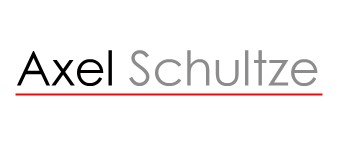Information Technology without Technology?
I wrote quite a bid about the disruption, the growth and the strategic values of Software as a Service. I shared with many of you my vision about this industry and where it can go. In an earlier post I stated that we may run a business with nothing but SaaS. Today I’d like to take you out into a near future office environment (a few calendar quarters from now).
OK – So our new office needs some basic communication with internal and external people. We need something for our bookkeeping and write invoices. We need to do some HR work, payroll and expense management. Our sales team need to manage customer contacts, our marketing team needs to manage campaigns and initiatives as well as partners and alliances. We also want something to manage our service teams’ requests and cases. And finally will need to manage our products, projects and entire logistics and warehouse.
So let’s put up our sleeves and start:
Communication: We may start with Yahoo email and calendar. It is free and allows us to work in a team and see each others calendar. We may then select Webex to communicate with our customers and partners in a more communicative way.
Office: While checking out Webex we find their office products and actually find the necessary office software to run our day to day documents, lists and data tables. And in the future we may consider Office Live from Microsoft.
Customers & Marketing: The obvious first name is Salesforce.com. But there are others like RightNow and Sugar CRM and already many more. Let’s pick SFDC for the fun of it and take RightNow to mange service requests. To write optimal proposals, we may consider Offermatica. If we now want to better plan out marketing campaigns we may come across Eloqua and take them to do the campaigns – may be we also choose ResultsMail to do the sending and tracking of email blasts and manage the ones who want to opt out. And if we want to integrate our partners we go with BlueRoads for channels and Loyalty Lab for retail customer loyalty management. Our call center may be entirely distributed across the nation using Five9.
People: To mange HR related activities we may see EmployEase and may be Expenseit to do the expense reports. To better manage personnel development we may use Successfactors. Additional hiring may be supported by LinkedIn.
Bookkeeping, Orders & Logistics: Now when we get orders we want to choose a complete ERP solution and may stumble over Intacct or NetSuite. We may track all our contracts with Encover. We may also choose one of the project management systems, SCM tools and other products out there for our specific needs.
As you can see we pretty quickly are able to replace every single software today with SaaS solutions. And guess what, all of the above can be done already today. I found over 300 vendors in some 30 categories who all can make this a reality. There is not a piece of software that I need to put on my computer other than a Browser and an OS of course.
But walking through this new office environment I discovered some totally new challenges: My SaaS applications are sometimes so cheap that I may need to connect with other users to find out the best usage – hard to call the Yahoo hotline and ask for somebody to come in and help us optimize the use of yahoo mail in a team environment. Another issue I’m facing in that office is that I don’t just start the software – I need to login and provide a password and do so for 20 different applications. Also I may need some tool – at least an online spread sheet – to track all the licenses and keep up with expiration dates. And when I begin to put this all together I would welcome some knowledgeable person to help me find the best solutions for me TODAY (since I don’t worry about tomorrow – because I simply switch if I need to).
The advantage how ever are big enough to go forward: We don’t need to mess with servers, with backup, with software upgrade and updates. We don’t need an engineer who puts this all together for us. We don’t need to allocate $250,000 capital expense for software and hardware. We don’t need to worry about service and maintenance contracts and we don’t need to plan amortization and think about what software is right for us today and how this decision may affect us in a year or two from now.
Tanooma will soon be a showcase for a completely SaaS based business – we have no software that runs on our servers (hence no servers). Tanooma is running a completely “Technology Free IT” environment. Simply because it is less expensive, requires no investment, requires no staff and allows us to pick and choose what is best for us TODAY and end of the year we may switch to what ever makes sense then.
Competitive advantage: We have the most flexible office IT infrastructure and can afford to pick the best possible solutions that fit our most current needs. While others may be limited by the investments they already made – we will have the best solutions for us when ever they are available.
P.S. Ismael Ghalimi, another fellow blogger said it this way: http://itredux.com/blog/office-20/
